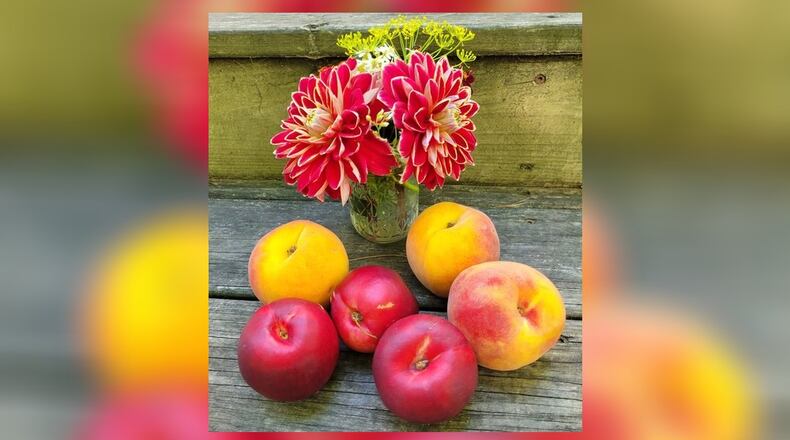Like many twins, the two have different reputations. The dictionary defines peach as a particularly good or attractive person or thing. No such alternate meaning for nectarine.
With its smooth skin and firmer texture, the nectarine is frequently mistaken for a cross between a peach and plum rather than a genetic near-twin of a peach. The nectarine is more easily bruised and damaged than its near-twin.
The peach has a better documented history. The peach tree is native to Northwest China between the Tarim Basin and the north slopes of the Kunlun Shan mountains, and that is where it was first domesticated and cultivated around 4,000 years ago.
The first cultivation of the nectarine was also probably in China, and probably earlier than the peach. But less is known about the nectarine’s history than its much beloved twin.
The word “peach” has a clear etymology, from ancient Persia through the Romans into Latin. How its less glamorous twin nectarine got named is unclear.
Seventeenth-century Germans name it nektarpfirsich (nectar peach), recognizing what we don’t, that peaches and nectarines are twins. The British then opted to use in English just the “nectar” part of the German mouthful.
You will not be surprised to learn that American consumers neglect the nectarine compared with its twin. Peaches outsell nectarines by 6 to 1.
And the gap between the twins is widening. Peach production has remained around the same nationally over the past 5 years, whereas nectarine production has declined by one-fourth.
Both peaches and nectarines are grown as clingstone or freestone. California, which is responsible for growing three-quarters of the nation’s peaches and nearly all of the nectarines, has been moving big-time away from clingstone and towards freestone.
Clingstones are said to be a bit juicier and sweeter than freestone ones. But Americans love their freestones given the relative ease of removing the stone.
The first local peaches I’ve had this summer have been freestone, and the first nectarines I’ve had have been clingstone. Another strike against the poor nectarine?
To retain flavor, local peaches and nectarines should be stored at room temperature. However, local peaches and peaches arrive already ripe, so watch them closely and move them to the refrigerator as soon as they soften. Remove a couple of them from the refrigerator in the morning so they can be eaten at room temperature during the day.
Be sure to give local nectarines at least equal time to local peaches. They are equally deserving twins.
MOON Co-op is Oxford’s consumer-owned full-service grocery, featuring natural, local, organic, sustainable and Earth-friendly products. The store, located at 516 S. Locust St. in Oxford, is open to the public every day. For more, go online to www.mooncoop.coop.
About the Author
